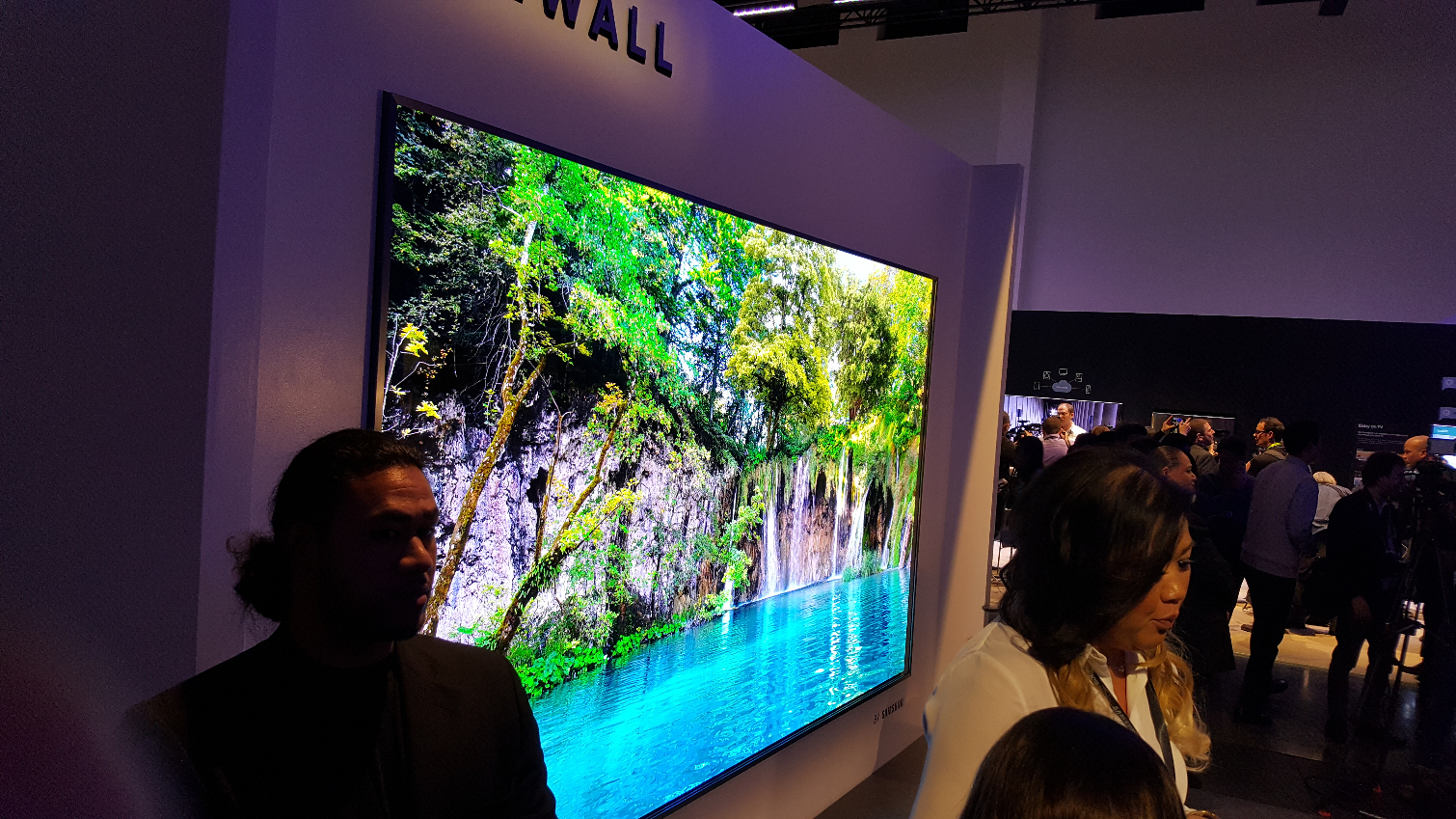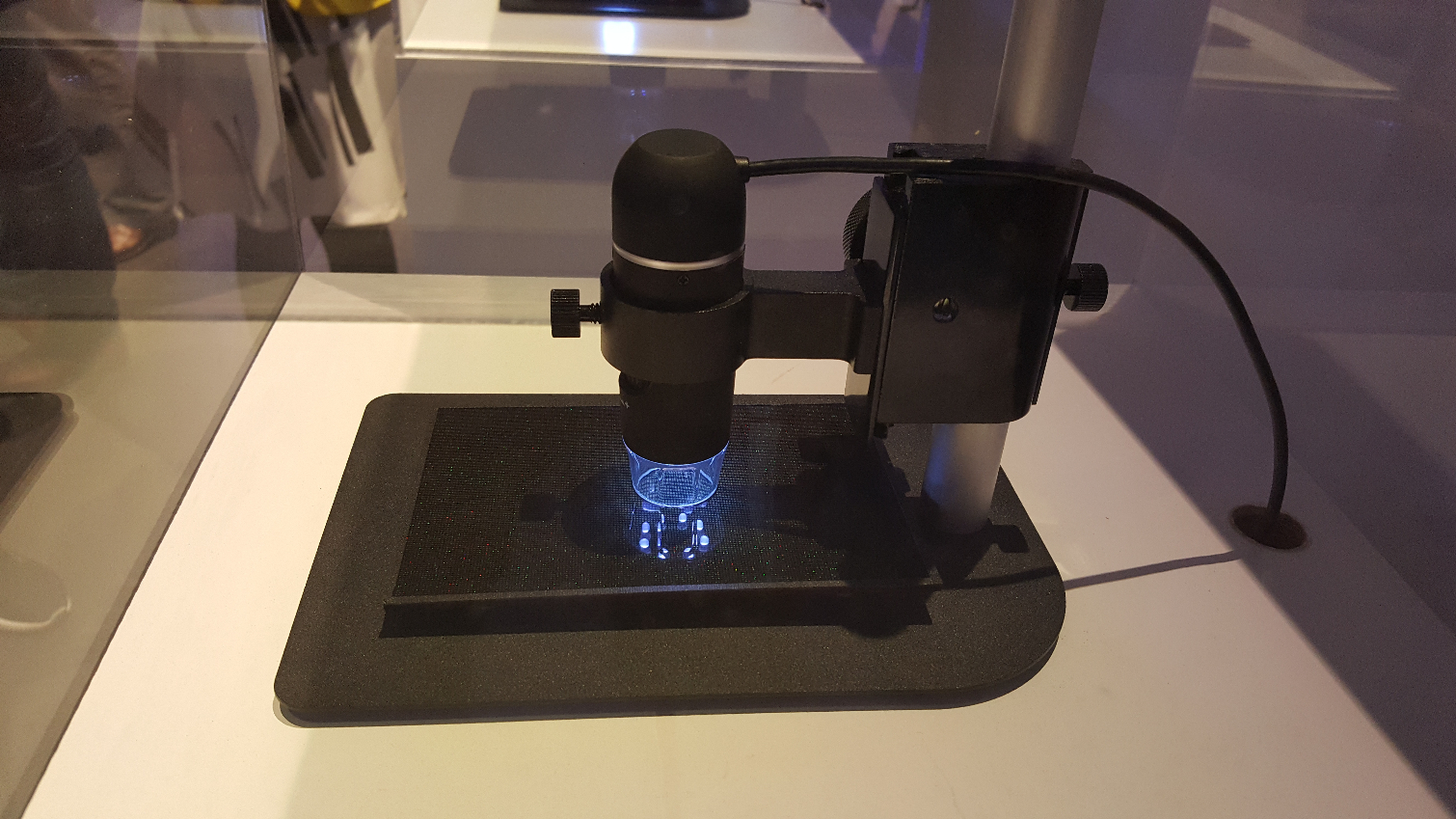Samsung's Wild MicroLED Modular TV Grows to 146 Inches
Samsung's massive home-cinema display, 'The Wall,' measures 146 inches and features new microLED pixels for darker blacks and richer colors.
With a name like “The Wall,” you expect Samsung’s new 146-inch home cinema display to be big and imposing. But the biggest thing about the giant display isn’t the picture size, but the pixels making it up.

MicroLED technology is here, and it's a very big deal. Adapted from Samsung’s Cinema Screen technology, which is currently used in projector-free movie theaters in South Korea, Samsung is bringing the microLED technology to the consumer market for the first time.
Here Comes MicroLED
Just microns thick, each microLED is an individual pixel in the giant display. Each pixel on the microLED is made up of three sub-pixels for a three-color light source. It's capable of all the color offered by an LCD display, but with one key difference: Instead of a liquid crystal display with broad backlight zones behind it, microLEDs go completely dark, offering the kind of true blacks that only OLED panels currently offer.
Because the microLED array creates an unfiltered self-emitting display, you'll also get brighter white levels and extra-vivid colors. Samsung claims that the brightness will beat the closest competitor by as much as 20 percent.

Samsung isn’t being shy about the new tech, either.
“It’s groundbreaking,” said Andrew Sivori, vice president of TV marketing at Samsung Electronics America, “There hasn’t really been, for all intents and purposes, a new TV technology in almost 10 years.”
Instead of an LCD layered over an illuminated LED panel and sandwiched between glass, Micro LEDs are effectively embedded into the surface of a circuit board, with far fewer layers needed to create a viewable picture. The result is a panel that measures less than an inch thick, though exact dimensions haven’t been released.

The TV Goes Modular
The display also boasts a modular design, with the 146-inch wide display made up of dozens of smaller postcard-sized panels. Combined into the full 146-inch display, the panels offer full 4k resolution. But, thanks to the modular structure, you can customize the size of your display to your exact specifications, reducing the size or altering the aspect ratio to your liking.
Get instant access to breaking news, the hottest reviews, great deals and helpful tips.
Samsung is staying mum on the details of the microLED panels, but the unit displayed at the show appeared to be made up of almost square tiles measuring roughly 3 inches across. Samsung is also keeping quiet about the technical aspects of how these multiple panels will connect, or what kind of software will support the varied resolutions and shapes offered by the modular design.

Small Tech, Big Changes
A close up look at the panel technology sheds some light on the underlying design. Each glittering black panel is covered with hundreds of microLEDs, each pixel a trio of light emitting points. While the surface has a glossy sheen to it, the microLEDs give it a distinct look from the mirror-like panels seen on OLED and LCD panels.
The new technology is a major step forward for Samsung, which has had to compete with LG’s dominant OLED displays with its QLED displays, which are essentially highly refined LCD panels. With microLED, there may be a viable alternative to OLED on the market by the end of 2018.
Brian Westover is currently Lead Analyst, PCs and Hardware at PCMag. Until recently, however, he was Senior Editor at Tom's Guide, where he led the site's TV coverage for several years, reviewing scores of sets and writing about everything from 8K to HDR to HDMI 2.1. He also put his computing knowledge to good use by reviewing many PCs and Mac devices, and also led our router and home networking coverage. Prior to joining Tom's Guide, he wrote for TopTenReviews and PCMag.

